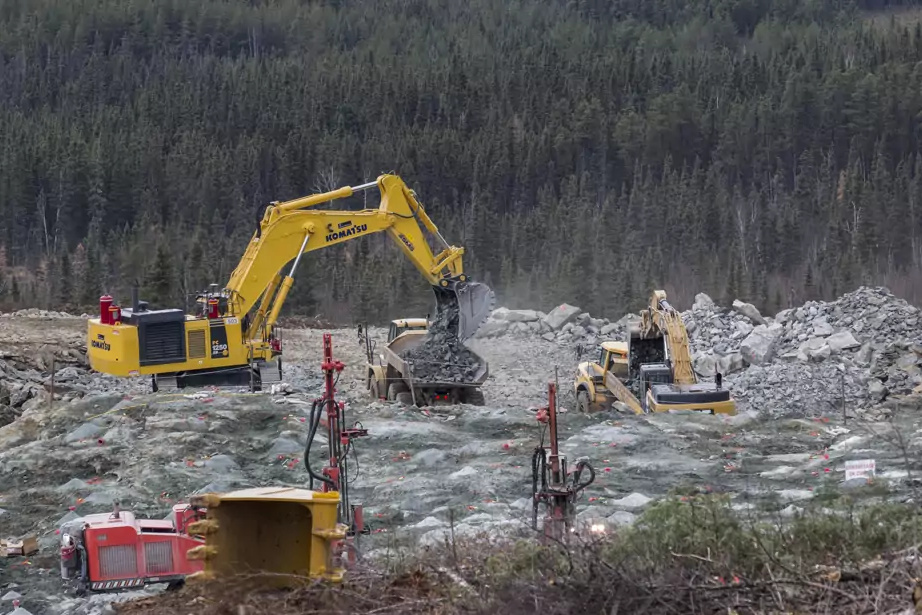The energy transition will cause the consumption of certain metals to jump, particularly to build batteries for electric cars. New mines are planned in regions unaccustomed to this industry. How to referee the debate?
“We met a lot of people opposed to these mines of the energy transition,” explains Axelle Ferrant, researcher in social responsibility at the School of Management Sciences of the University of Quebec in Montreal (UQAM), who presented her work at the Acfas congress in mid-May in Ottawa. “More than supportive people. »
The fundamental question posed by these opponents, according to Mme Ferrant: are these new mines the only solution for the energy transition? “No one questions the need for the energy transition. But many wonder if a transition based on maintaining our way of life, with electric cars replacing gasoline cars, is the only possible path. Some also wonder if, by changing our way of life, mines may no longer be necessary. »

PHOTO PROVIDED BY AXELLE FERRANT
Axelle Ferrant, researcher in social responsibility at the School of Management Sciences of UQAM
The Montreal researcher conducted these interviews as part of a large project on the social acceptability of mining projects in the energy transition. “The question we ask is the following: does the social utility of a mineral influence the social acceptability of mining projects? Perhaps if we demonstrate that the electric car is the solution, perhaps citizens will be more favorable to these mining projects. »

PHOTO TAKEN FROM THE MINING WATCH CANADA SITE
Demonstration against the Authier lithium mine project
Stronger opposition in recreational and tourism zones
Mme Ferrant published last year, in the journal VertigO of environmental science from UQAM, a first part of this research. This is an analysis of 300 press articles on the Authier lithium mine project, near Val-d’Or. After having been designed to escape a BAPE assessment (by remaining under a production of 2000 tonnes per year), it faced citizen mobilization because of its proximity to a water source. Last year, the Sayona company decided to voluntarily submit it to the BAPE.
M’s proposalme Ferrant: make these mining projects an “arena to democratically debate the trajectories of the transition”.
We see a difference in the social acceptability of energy transition mining projects, depending on whether they are located in a mining region or a more recreational-tourist region. Opposition is stronger in recreational and tourism regions. That said, the Authier project is located in a mining region.
Axelle Ferrant, researcher in social responsibility at the School of Management Sciences of UQAM
Public transport is more difficult to implement in recreational and tourism regions, for example the Laurentians, because of the lower population density. Do opponents of mining projects realize that by refusing to allow the energy transition to take place by replacing gasoline cars with electric cars, they are potentially compromising their car-based lifestyle?
“It is not addressed by the opponents,” replies Mme Ferrant. I think what is important is to have a social debate on the trajectories of the energy transition. »

PHOTO OLIVIER PONTBRIAND, LA PRESSE ARCHIVES
A subsidiary of Sayona Mining of Australia, Sayona operates the North America Lithium Complex (LAN) mine in La Corne, Abitibi.
Produce in poor countries?
Does refusing to allow the new mines of the energy transition to be established here not amount to taking advantage of the less demanding environmental standards of other countries?
Last winter, the 6e session of the UN Environment Assembly noted the risks and promises that minerals needed for the energy transition can have on poor countries. The Democratic Republic of Congo, for example, produces almost three-quarters of the world’s cobalt, and the Philippines and Indonesia, half of the nickel. Lithium, which completes the mining triumvirate of the energy transition, is the only one that is mainly produced in a rich country, Australia.

“It’s a question that doesn’t come up at all when we talk to the population,” said M.me Ferrant. On the other hand, we hear several political leaders say that it is better to make these mines at home rather than in China or in poor countries in deplorable conditions. »

Mme Ferrant believes that this argument is fallacious for four reasons. “Asking the question in this way prevents us from rethinking our system, imposing on us an extractivist trajectory for the energy transition. Secondly, we must not forget that, for the most part, these are the same mining companies in the North and the South. Normally, they must have the same standards even if there is less environmental legislation in the South. And several studies show that the mining revival in Europe and North America does not translate into a reduction in the number of extractive projects in the South, because demand is increasing sharply worldwide. »

The argument according to which it is better to produce in Canada, under a rigorous environmental regime, than in poor countries ultimately hides another debate, on the nature of the economy desired for a region or for a country.
“Even if we choose the energy transition trajectory which does not change our way of life, we can choose an economy based on recreational tourism rather than mining activity. It is an industrial development choice. If regions or countries want to anchor their economic development in extraction, that is their choice. »
Read the article “The dark side of the energy transition”
Learn more
-
- 70%
- Increase in global demand for cobalt between 2017 and 2022
Source: International Energy Agency
- 40%
- Increase in global nickel demand between 2017 and 2022
Source: International Energy Agency
-
- 43 times
- Global lithium demand expected to increase in 2040, compared to 2020
Source: International Energy Agency
